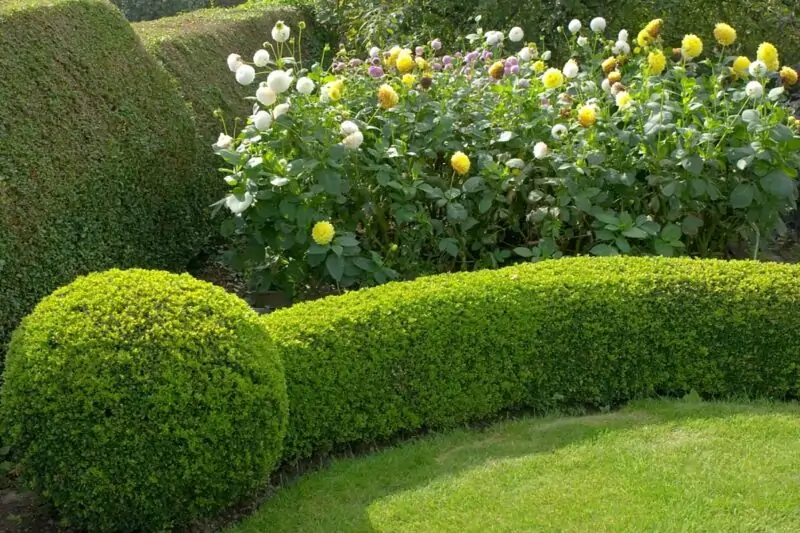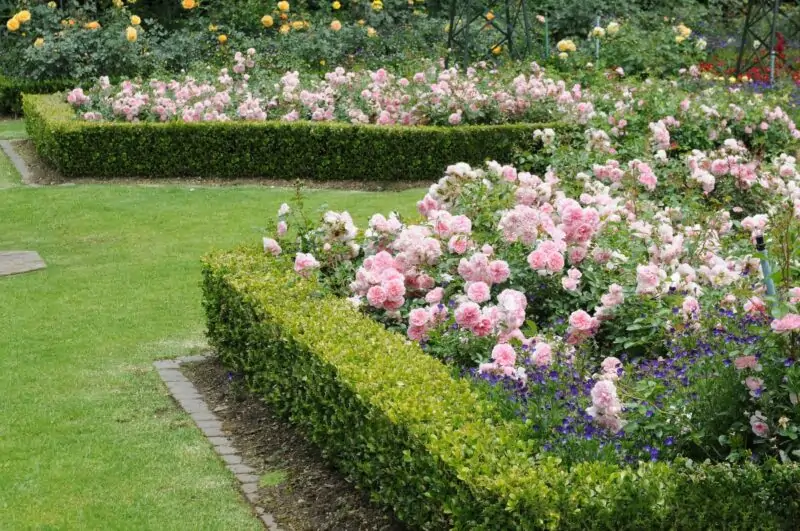What are Hedgerows: Boost Hedge Biodiversity and Create a Haven for Wildlife

Picture a green, living wall bustling with flora and fauna, a symphony of life, with the sweet scent of blooming flowers on a warm summer day. Hedgerows aren’t just simple bushes. They’re complex ecosystems and symbols of history, resonating with the melody of nature’s orchestra. In this article, we’re going to delve deep into their story, ecology, and importance, equipping you with all you need to cultivate your own. So, what are hedgerows?
Understanding What Are Hedgerows
Hedgerows! They are much more than just shrubs lined up neatly along your property line or a simple fence providing privacy from peeping neighbors. These are spectacularly diverse ecosystems, often comprising trees and shrubs, shrubs and trees, both young and old. Plus, don’t be surprised to find a carpet of grass, herbs, and flowers along the hedgerows, enriching the scene even more.
But hey, the party doesn’t end here! These living fences are often abuzz with the chirpings of birds, the rustle of small mammals, the busy hum of insects, and the silent flight of bats. Hedgerows, thus, serve as corridors of life, offering shelter and food to wildlife, while contributing significantly to local biodiversity. Talk about a bush doing more than just looking pretty!
Importance of Hedgerows in the Landscape
Hedgerows are vital elements of our landscapes. They’ve been around for hundreds of years, with some old hedgerows in England and Wales aging up to 800 years! They serve as historical markers, provide important habitats for plants and wildlife, and act as windbreakers, reducing soil erosion and protecting crops.
Hedgerows are the superheroes of our ecosystem, increasing biodiversity, and providing wildlife corridors for species to move safely. They also contribute to controlling pests by hosting beneficial insects and reducing the effects of flooding by slowing down the movement of water. Not just that, they even contribute to a beautiful landscape, marking boundaries between farm fields, and providing enclosure to livestock.
Defining a Hedgerow
Differentiating Hedgerow and Hedge
So you’re thinking, “Okay, but isn’t a hedgerow just a fancy name for a hedge?” Well, not quite. Although the terms “hedge” and “hedgerow” are often used interchangeably, there’s a subtle difference. A hedge is usually a line of a single type of shrub, planted closely to form a dense, often impenetrable barrier. On the other hand, a hedgerow is a lot of hedgerows, consisting of multiple species, including trees, shrubs, grasses, and flowers.
Characteristics of a Hedgerow
Hedgerows come in all shapes and sizes, ranging from short, neatly trimmed hedges to tall, bushy, and wild ones. They are often densely planted, forming a living fence that’s both functional and beautiful. A typical hedgerow consists of a variety of woody species, with an understory of grasses and herbaceous plants. You may also spot a flurry of flowers along these green corridors, attracting a range of wildlife.
Historical and Cultural Significance of Hedgerows
Hedgerows hold immense historical and cultural significance, particularly in England, where the tradition of hedge laying dates back to the 18th and 19th centuries. During this time, miles of hedgerow were planted, providing enclosure to livestock and marking the boundaries of farm fields. These hedgerows are often seen growing along the property lines, serving as living documents of our agricultural past.
The Process of Hedge Laying
Traditional Hedge Laying Techniques
Hedge laying, or hedgelaying, is an art of manipulating and interweaving the stems of trees and shrubs. The traditional method, originating in the English Midlands, involved partially cutting through the stem of the plant, bending it over and intertwining it with others to create a dense, stock-proof barrier. Hazel was often used for this purpose, its flexible stems perfect for the job.
Modern Approaches to Hedge Laying
With the advent of modern agricultural practices, new techniques have evolved. Instead of primarily using a single species, hedgerows now often include a mix of native trees and shrubs. Plant species like hawthorn, blackthorn, and privet are often planted. Adding native plants helps in enhancing biodiversity, and it also makes the hedgerow more resilient to pests and diseases.
Benefits of Proper Hedge Laying
Proper hedge laying isn’t just about creating an aesthetically pleasing hedge; it has several other benefits. It encourages the growth of new plants, making the hedgerow dense, thereby providing a safe home to many creatures. Plus, it also prolongs the life of the hedgerow by promoting the growth of young shoots.
Hedgerows as Habitats
The Role of Hedgerows in Biodiversity
Hedgerows provide valuable habitats for a myriad of species, from tiny beneficial insects to birds like the yellowhammer and the whitethroat, and mammals like the dormouse. They provide food, shelter, and corridors for wildlife to move between isolated woodlands. Plus, different plant species in hedgerows bear fruit at different times, ensuring a year-round supply of food for the wildlife.
Examples of Species that Depend on Hedgerows
Let’s talk specifics! The hazel dormouse is one of the many species that rely on hedgerows. These cute creatures love to nest in the dense, bushy structure of the hedgerow, often in nests made from honeysuckle bark. Moreover, birds like the yellowhammer use hedgerows as a nesting site and a source of food, while bats use them as commuting routes between their roosting and feeding sites.
The Impact of Hedgerows on Local Ecosystems
Hedgerows play a significant role in local ecosystems. They act as barriers between fields, reducing soil erosion and mitigating the effects of flooding. Hedgerows also lessen the impact of agricultural chemicals by acting as a buffer, capturing runoff, and preventing it from reaching water bodies. What’s more, they even contribute to landscape-scale connectivity, connecting isolated habitats and making it easier for wildlife to move around.
How to Plant a Hedgerow

Choosing the Right Species for a Hedgerow
When it comes to planting a new hedgerow, choosing the right species is key. Go for a mix of native trees and shrubs like hawthorn, blackthorn, and hazel. You can even throw in some fruiting trees or vines for a bonus edible harvest! Remember, the richer the variety, the more wildlife you’ll attract.
Steps to Planting a Hedgerow
So, you’ve chosen your plants and are ready to dig in. Start by preparing a strip of land, clearing it of any weeds. Next, dig a trench and plant your trees and shrubs in rows, firming the soil around them. Now, all you need to do is water them well, and watch your hedgerow come to life!
Maintenance and Care of Hedgerows
Newly planted hedgerows need a bit of TLC. Keep them well-watered, especially during dry spells. You might need to trim them in the first couple of years to encourage dense growth. Once your hedgerow is established, less is more when it comes to maintenance. Allow it to grow semi-naturally with minimal trimming, this will create a more diverse wildlife habitat and result in a denser hedge.
Remember, some hedgerows may be protected by law, particularly important or old ones. It’s always best to check if any restrictions apply before carrying out work on a hedgerow.
FAQs
A hedgerow makes more than just a pretty border; it can be a boon to wildlife, provide berries for foraging, act as a windbreak, and help reduce flooding. They’re a farmland staple, often seen lining the edges of your property, making them an important part of rural and semi-urban landscapes.
Hedgerows often consist of trees and shrubs native to the area. In English hedgerows, you’ll typically find a mix of hawthorn, blackthorn, and hazel. In addition to these, standard trees like oak or ash are sometimes included for added height and variety.
Maintenance is quite simple. For the first few years, regular watering and occasional trimming will help your hedgerow become established. After that, less frequent, careful trimming will usually suffice, allowing for a more semi-natural growth pattern.
Absolutely! In farmland, they act as natural fences and windbreaks. Plus, they can provide valuable wildlife a habitat and corridor, contributing to local biodiversity. Furthermore, certain hedgerow plants, such as blackthorn, yield sloes for making sloe gin, and hawthorn berries can be used in jams and jellies.
Conclusion
We’ve traveled quite a journey, haven’t we? From understanding what are hedgerows, to their importance in our landscape, their role as a bustling wildlife habitat, and even how to plant and care for them. Hedgerows are an integral part of our cultural heritage and ecological networks. They’re much more than just rows of trees or a ditch separating fields. They are lifelines for many species, corridors of connectivity, and guardians of our landscapes.